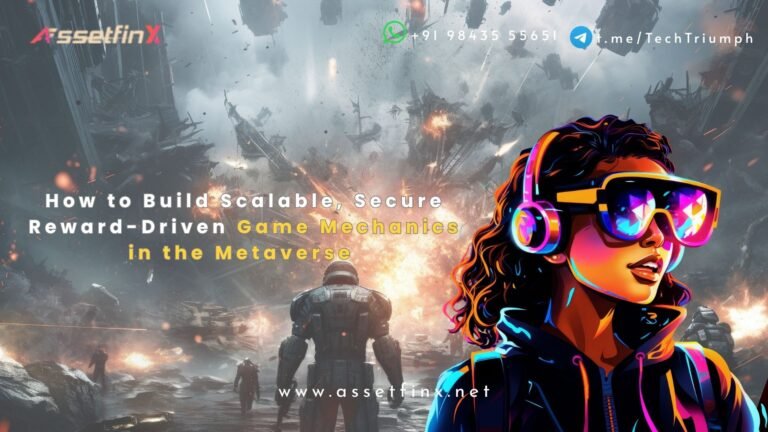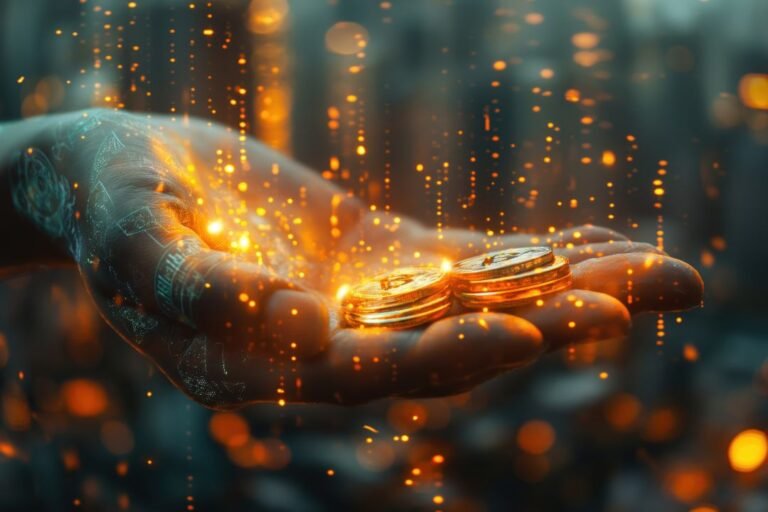The tokenization of real-world assets (RWAs) is reshaping how we perceive, trade, and invest in tangible and intangible value. Whether it’s real estate, art, commodities, or financial instruments, blockchain-based tokenization is transforming traditional asset classes into digitally accessible units. As global economies push toward decentralized finance (DeFi), tokenizing real-world assets is emerging as one of the most promising applications of blockchain technology.
In this article, we’ll dive deep into what tokenization of real-world assets means, how it works, the benefits and challenges, real-world use cases, and its future potential in modern finance.
What Is Tokenization of Real-World Assets?
Tokenization of real-world assets refers to the process of converting ownership rights in a physical or traditional asset into a digital token on a blockchain. These tokens represent either fractional or full ownership and can be traded, transferred, or stored digitally.
In essence, tokenization bridges the physical and digital worlds by creating blockchain-based representations of:
-
Real estate
-
Gold and precious metals
-
Fine art and collectibles
-
Equities and bonds
-
Commodities
-
Intellectual property
-
Carbon credits
For example, tokenizing a $10 million commercial building could involve creating 1 million digital tokens, each worth $10. Investors could then purchase tokens to own a fraction of the asset.
How Tokenization Works: The Technical Architecture
The tokenization process typically involves several key steps:
1. Asset Identification and Legal Structuring
Before anything is digitized, the underlying asset must be identified and valued. Then, legal frameworks must be established to ensure token holders have recognized rights (ownership, dividends, voting, etc.).
2. Smart Contract Creation
A smart contract—a self-executing program on a blockchain—governs the rules for the token. It defines:
-
Total supply
-
Ownership rights
-
Transfer restrictions
-
Dividend mechanisms
3. Token Issuance
The digital tokens are minted (created) on a blockchain platform such as Ethereum, Polygon, or a private blockchain. These tokens may follow standards like ERC-20 or ERC-721 depending on whether they are fungible or non-fungible.
4. KYC/AML Compliance
To meet regulatory requirements, users typically undergo Know Your Customer (KYC) and Anti-Money Laundering (AML) checks before acquiring tokens.
5. Secondary Market Trading
Once issued, these tokens can be traded on compliant digital asset exchanges, unlocking liquidity and broader access.
Benefits of Tokenizing Real-World Assets
The tokenization of real-world assets brings numerous advantages for investors, asset owners, and financial institutions alike.
1. Increased Liquidity
Traditionally illiquid assets like real estate or fine art can be fractionalized and traded on digital exchanges. This democratizes access and unlocks capital.
2. Fractional Ownership
Tokenization allows assets to be split into smaller units, enabling investors with limited capital to gain exposure to high-value assets. For instance, someone can invest $100 in a $1 million apartment.
3. 24/7 Global Markets
Unlike traditional markets limited by geography and hours, tokenized assets can be traded globally, 24/7, increasing market efficiency.
4. Faster Settlement and Lower Costs
Blockchain infrastructure enables instant transactions without the need for intermediaries. This reduces friction, delays, and fees associated with traditional systems.
5. Transparency and Immutability
All token transactions are recorded on the blockchain, creating an auditable trail. This transparency reduces fraud and increases investor confidence.
6. Programmability
Smart contracts can automate complex processes such as profit distribution, governance, and compliance, reducing the need for manual oversight.
Challenges and Risks in Tokenizing Real-World Assets
Despite its potential, the tokenization of real-world assets is not without hurdles.
1. Regulatory Uncertainty
One of the biggest challenges is the lack of clear, consistent regulation. Different countries treat digital assets differently, raising compliance issues for global platforms.
2. Legal Enforceability
Ensuring that token ownership equates to legal ownership of the asset in the real world is complex and jurisdiction-dependent.
3. Custodianship of Physical Assets
Securely managing and storing the physical counterpart of the tokenized asset—like a painting or property—remains a logistical challenge.
4. Market Infrastructure
While secondary markets for tokenized assets are growing, liquidity is still limited compared to traditional stock exchanges.
5. Smart Contract Risks
Bugs or vulnerabilities in smart contracts can be exploited, leading to potential loss of funds or manipulation.
Real-World Use Cases of Asset Tokenization
Several industries are already experimenting with or adopting tokenization of real-world assets:
1. Real Estate
Platforms like RealT and Lofty allow fractional investment in U.S. rental properties via blockchain tokens. Investors receive proportional rental income and can trade tokens on supported platforms.
2. Art and Collectibles
Startups like Masterworks enable the purchase of shares in iconic artworks. Each piece is securitized and tokenized, allowing fractional ownership of valuable assets.
3. Commodities
Gold-backed tokens like Paxos Gold (PAXG) or Tether Gold (XAUT) offer a way to digitally trade physical gold. Each token is backed by one ounce of gold stored in secure vaults.
4. Carbon Credits
Blockchain projects like Toucan Protocol and KlimaDAO tokenize carbon offsets, making it easier to trade and retire them transparently.
5. Private Equity and Debt
Platforms like Securitize and Tokeny are working with financial institutions to tokenize shares in private companies and bonds, opening up alternative investment opportunities.
Token Standards and Platforms for RWA Tokenization
Several token standards are widely used in RWA tokenization:
-
ERC-20: The most common for fungible tokens.
-
ERC-721 / ERC-1155: Used for non-fungible assets like artwork or collectibles.
-
ERC-1400: A standard for security tokens, including compliance features.
Popular platforms facilitating tokenization include:
-
Polymath: Focused on security tokens.
-
Tokeny: A compliance-focused platform for asset tokenization.
-
RealT: Specializes in tokenized real estate.
-
Centrifuge: Connects real-world assets to DeFi liquidity.
Regulatory Landscape for Tokenized Assets
The regulatory environment surrounding tokenized assets is evolving:
-
United States: The SEC classifies most tokenized RWAs as securities, requiring compliance with securities laws.
-
European Union: The Markets in Crypto-Assets (MiCA) regulation aims to provide legal clarity and harmonization across EU member states.
-
Asia: Jurisdictions like Singapore and Hong Kong are taking a progressive stance by fostering innovation while ensuring compliance.
Understanding local and cross-border regulations is crucial for successful tokenization initiatives.
Tokenization vs. Traditional Finance: A Paradigm Shift
| Feature | Traditional Assets | Tokenized Assets |
|---|---|---|
| Ownership | Centralized, paper-based | Decentralized, digital |
| Liquidity | Often limited | High (fractional trading) |
| Accessibility | High capital barrier | Low capital requirement |
| Settlement | Days | Near-instant |
| Transparency | Opaque | Fully transparent |
| Market Hours | Limited | 24/7 Global |
The table above illustrates why tokenization is often referred to as the future of asset management and investing.
The Future of Tokenized Real-World Assets
The tokenization of real-world assets is still in its early days, but its trajectory is unmistakable. According to estimates by Boston Consulting Group (BCG), the tokenized asset market could reach $16 trillion by 2030.
Key trends shaping the future include:
-
Institutional Adoption: Major banks and asset managers are exploring tokenized investment vehicles.
-
Integration with DeFi: Tokenized RWAs can serve as collateral or yield-bearing instruments in DeFi protocols.
-
Interoperability Solutions: Cross-chain platforms are emerging to make tokenized assets transferable across blockchains.
-
AI + Tokenization: Predictive models and AI-driven compliance tools will enhance security and decision-making.
Conclusion
The tokenization of real-world assets is a revolutionary concept with the power to democratize investment, unlock liquidity, and bring transparency to historically opaque markets. As technology matures and regulatory clarity improves, we can expect more asset classes to be tokenized and integrated into the digital economy.
For investors, enterprises, and governments alike, now is the time to understand, experiment with, and embrace this powerful innovation at the intersection of finance and technology.





